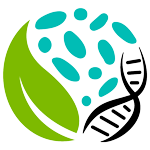Extreme diversification of the mating type-high-mobility group (MATA-HMG) gene family in a plant-associated arbuscular mycorrhizal fungus
Rohan Riley, Philippe Charron, Alexander Idnurm, Laurent Farinelli, Yolande Dalpé, Francis Martin, and Nicolas Corradi
27 August 2013, New Phytologist 201: 254-268; doi: 10.1111/nph.12462
Abstract
Arbuscular mycorrhizal fungi (AMF) are important plant symbionts that have long been considered evolutionary anomalies because of their apparent long-term lack of sexuality, but recent explorations of available DNA sequence have challenged this notion by revealing the presence of homologues of fungal mating type-high-mobility group (MATA-HMG) and core meiotic genes in these organisms. To obtain more insights into the sexual potential of AMF, homologues of MATA-HMGs were sought in the transcriptome of three AMF isolates, and their functional and evolutionary trajectories were studied in genetically divergent strains of Rhizophagus irregularis using conventional and quantitative PCR procedures. Our analyses revealed the presence of at least 76 homologues of MATA-HMGs in R. irregularis isolates. None of these was found to be surrounded by genes generally found near other known fungal mating type loci, but here we report the presence of a 9-kb-long region in the AMF R. irregularis harbouring a total of four tandem-repeated MATA-HMGs; a feature that highlights a potentially elevated intragenomic diversity in this AMF species. The present study provides intriguing insights into the genome evolution of R. irregularis, and represents a stepping stone for understanding the potential of these fungi to undergo cryptic sex.
Citation
Riley, R., Charron, P., Idnurm, A., Farinelli, L., Dalpé, Y., Martin, F. and Corradi, N. (2014), Extreme diversification of the mating type–high-mobility group (MATA-HMG) gene family in a plant-associated arbuscular mycorrhizal fungus. New Phytologist, 201: 254–268. doi: 10.1111/nph.12462

